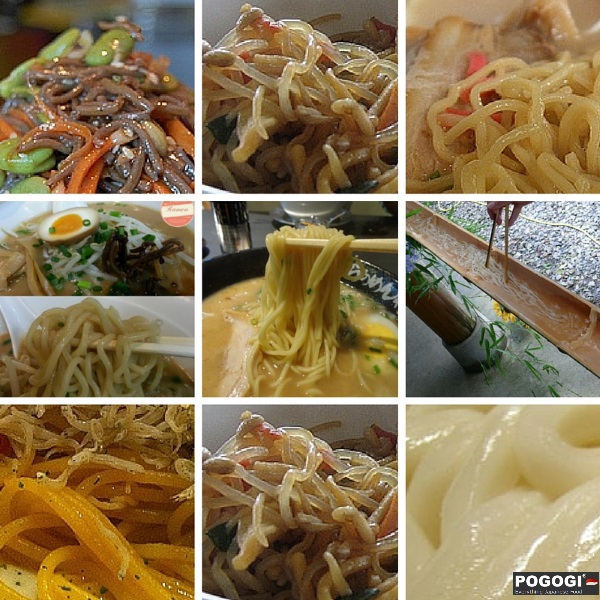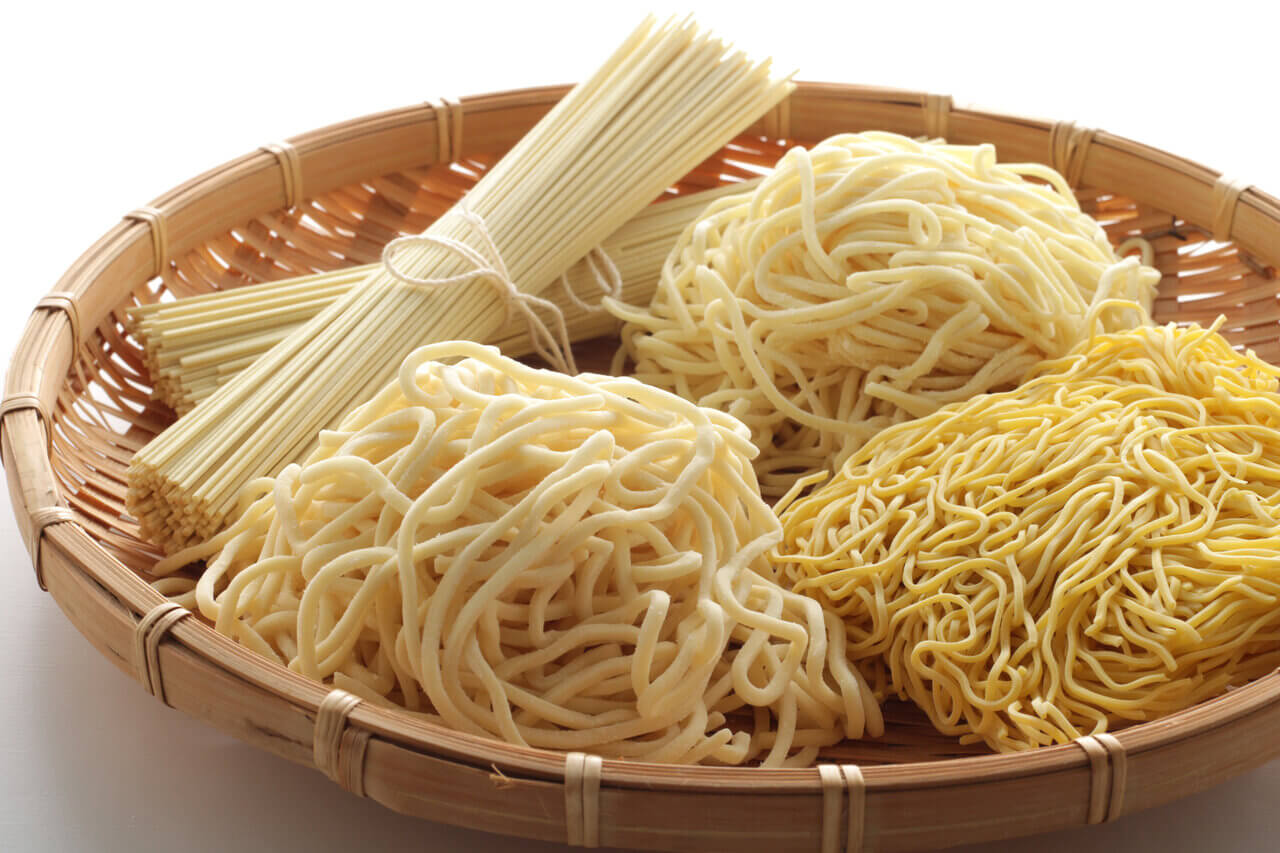Different Kinds Of Japanese Noodles: A Deep Dive Into The Flavorful World
Japanese noodles have become a global phenomenon, and it's not hard to see why. From slurping ramen on a chilly night to enjoying soba during a summer picnic, these noodles bring comfort, tradition, and a whole lot of flavor to the table. Whether you're a foodie or just someone who loves a good bowl of carbs, there's something about Japanese noodles that keeps us coming back for more. But did you know there are so many different kinds of Japanese noodles? Let's uncover the secrets behind this culinary treasure.
When it comes to Japanese cuisine, noodles play a starring role. They're versatile, satisfying, and packed with cultural significance. Whether you're dining in Tokyo or whipping up a quick dish at home, Japanese noodles offer endless possibilities. So, buckle up because we're about to take you on a noodle-filled adventure that'll make your taste buds dance with joy.
But here's the deal—there's more to Japanese noodles than just ramen. Oh yes, we're diving deep into the lesser-known varieties, exploring their unique flavors, textures, and the stories behind them. By the end of this article, you'll be a noodle connoisseur ready to impress your friends with your newfound knowledge. Let's get started!
Read also:Discover Chanel West Coast Net Worth Age And Personal Life 2023
Here's a quick table of contents to help you navigate through this noodle extravaganza:
- The History of Japanese Noodles
- Different Kinds of Japanese Noodles
- Ramen: The King of Japanese Noodles
- Soba: The Elegant Buckwheat Noodle
- Udon: The Thick and Chewy Delight
- Somen: The Thin and Refreshing Option
- Health Benefits of Japanese Noodles
- How to Cook Japanese Noodles at Home
- Perfect Pairings for Japanese Noodles
- FAQs About Japanese Noodles
- Conclusion: Your Noodle Journey Awaits
The History of Japanese Noodles
Japanese noodles have a rich history that dates back centuries. Believe it or not, these noodles were originally inspired by Chinese cuisine. Back in the day, traders and monks brought noodle-making techniques from China to Japan. Over time, the Japanese put their own spin on things, creating unique noodle varieties that reflect their culture and ingredients.
Evolution of Noodle Culture
Fast forward to today, and Japanese noodles have become an integral part of the country's culinary identity. They're served in high-end restaurants, humble street stalls, and even convenience stores. Each region in Japan has its own take on noodles, adding local flavors and ingredients to the mix. It's like a noodle treasure hunt waiting to happen!
Different Kinds of Japanese Noodles
Now, let's talk about the star of the show—different kinds of Japanese noodles. There's a whole world out there beyond ramen, and each type has its own personality. Here's a rundown of the main players:
- Ramen: The king of Japanese noodles, known for its rich broths and diverse styles.
- Soba: Made from buckwheat, soba noodles are delicate and earthy, perfect for both hot and cold dishes.
- Udon: Thick and chewy, udon noodles are a comfort food staple in Japan.
- Somen: Thin and delicate, somen noodles are often served cold during the summer months.
Ramen: The King of Japanese Noodles
Let's talk about the big guy—ramen. This noodle sensation has taken the world by storm, and for good reason. Ramen is more than just a bowl of noodles; it's an experience. The broth, the toppings, the slurping—it's all part of the magic.
Read also:Unlocking The Potential Of Hsoda030 A Comprehensive Guide
Types of Ramen Broths
Ramen broths come in all shapes and sizes. You've got your classic tonkotsu (pork bone), shoyu (soy sauce), miso, and shio (salt) varieties. Each one offers a different flavor profile, so there's something for everyone. And don't forget about the toppings—cha-shu pork, soft-boiled eggs, nori, and green onions are just the beginning.
Soba: The Elegant Buckwheat Noodle
Soba noodles are the classy cousins of ramen. Made from buckwheat, they have a nutty flavor and a delicate texture. Soba can be served hot in a savory broth or cold with a dipping sauce. It's the perfect noodle for those who appreciate subtlety and elegance.
Health Benefits of Soba
Did you know soba noodles are packed with nutrients? They're rich in protein, fiber, and essential minerals like magnesium and manganese. Plus, they're gluten-free, making them a great option for those with dietary restrictions. It's like having your cake and eating it too—well, your noodles, that is.
Udon: The Thick and Chewy Delight
Udon noodles are the ultimate comfort food. Thick, chewy, and satisfying, they're perfect for when you're craving something hearty. Udon can be served in a variety of ways, from hot soups to cold noodle salads. It's the kind of noodle that makes you go "mmm" with every bite.
Popular Udon Dishes
Some of the most popular udon dishes include kake udon (simple broth with toppings), curry udon (rich curry broth), and yaki udon (stir-fried noodles). The possibilities are endless, and each dish brings its own twist to the table.
Somen: The Thin and Refreshing Option
If you're looking for a lighter noodle experience, somen is the way to go. These thin, delicate noodles are often served cold during the summer months. They're perfect for when you want something refreshing without sacrificing flavor.
Serving Suggestions for Somen
Somen can be enjoyed with a simple dipping sauce of soy sauce, dashi, and mirin. For a more adventurous option, try topping them with grated yam or fresh vegetables. It's like a noodle spa day for your taste buds.
Health Benefits of Japanese Noodles
Japanese noodles aren't just delicious—they're also good for you. Many varieties are made from whole grains, making them a great source of fiber and nutrients. Plus, they're often served with fresh vegetables and lean proteins, creating a balanced and nutritious meal.
Low-Calorie Options
Looking to keep things light? Somen and soba noodles are excellent low-calorie options. Pair them with a simple broth or dipping sauce, and you've got a meal that's both satisfying and healthy. It's like having your noodle cake and eating it too—again!
How to Cook Japanese Noodles at Home
Cooking Japanese noodles at home is easier than you think. With a few simple ingredients and some basic techniques, you can recreate your favorite dishes right in your own kitchen. Here's how:
Basic Steps for Cooking Japanese Noodles
- Boil water in a large pot.
- Add the noodles and cook according to package instructions.
- Drain and rinse the noodles under cold water for soba and somen.
- Prepare your broth or dipping sauce.
- Add toppings and enjoy!
Perfect Pairings for Japanese Noodles
Japanese noodles are versatile, meaning they pair well with a wide range of ingredients. Here are some perfect pairings to take your noodle game to the next level:
Top Toppings for Japanese Noodles
- Cha-shu pork
- Soft-boiled eggs
- Green onions
- Nori
- Shiitake mushrooms
FAQs About Japanese Noodles
Got questions about Japanese noodles? We've got answers. Here are some frequently asked questions:
Q: Are Japanese noodles gluten-free?
A: Some varieties, like soba noodles, are naturally gluten-free. However, always check the packaging to be sure.
Q: Can I freeze Japanese noodles?
A: Yes, many Japanese noodles can be frozen for later use. Just make sure to store them in an airtight container.
Conclusion: Your Noodle Journey Awaits
And there you have it—a deep dive into the world of different kinds of Japanese noodles. From ramen to soba, udon to somen, there's something for everyone in this noodle wonderland. So, whether you're slurping up a steaming bowl of ramen or enjoying a refreshing plate of cold soba, remember that each bite is a journey through Japan's rich culinary history.
Now it's your turn. Head to the kitchen, grab some noodles, and start experimenting. And don't forget to share your noodle adventures with us in the comments below. Who knows? You might just inspire someone else to take their own noodle journey. Happy slurping, folks!


